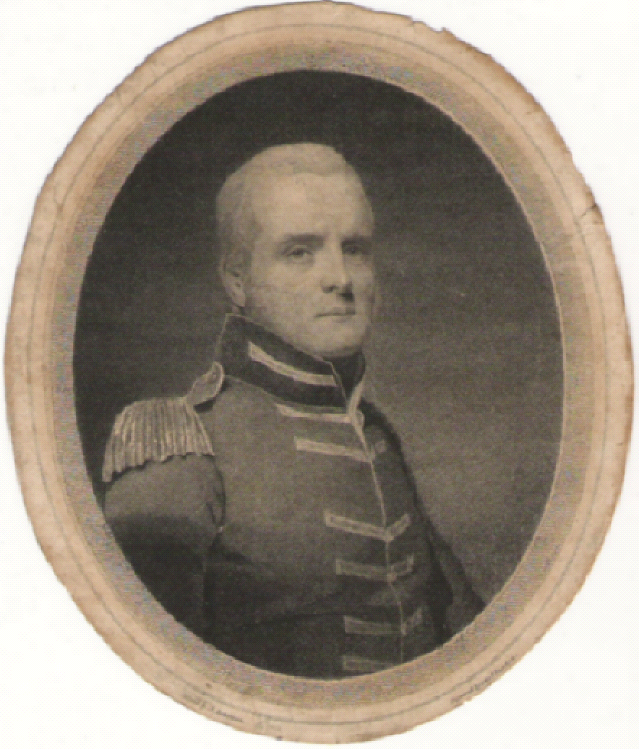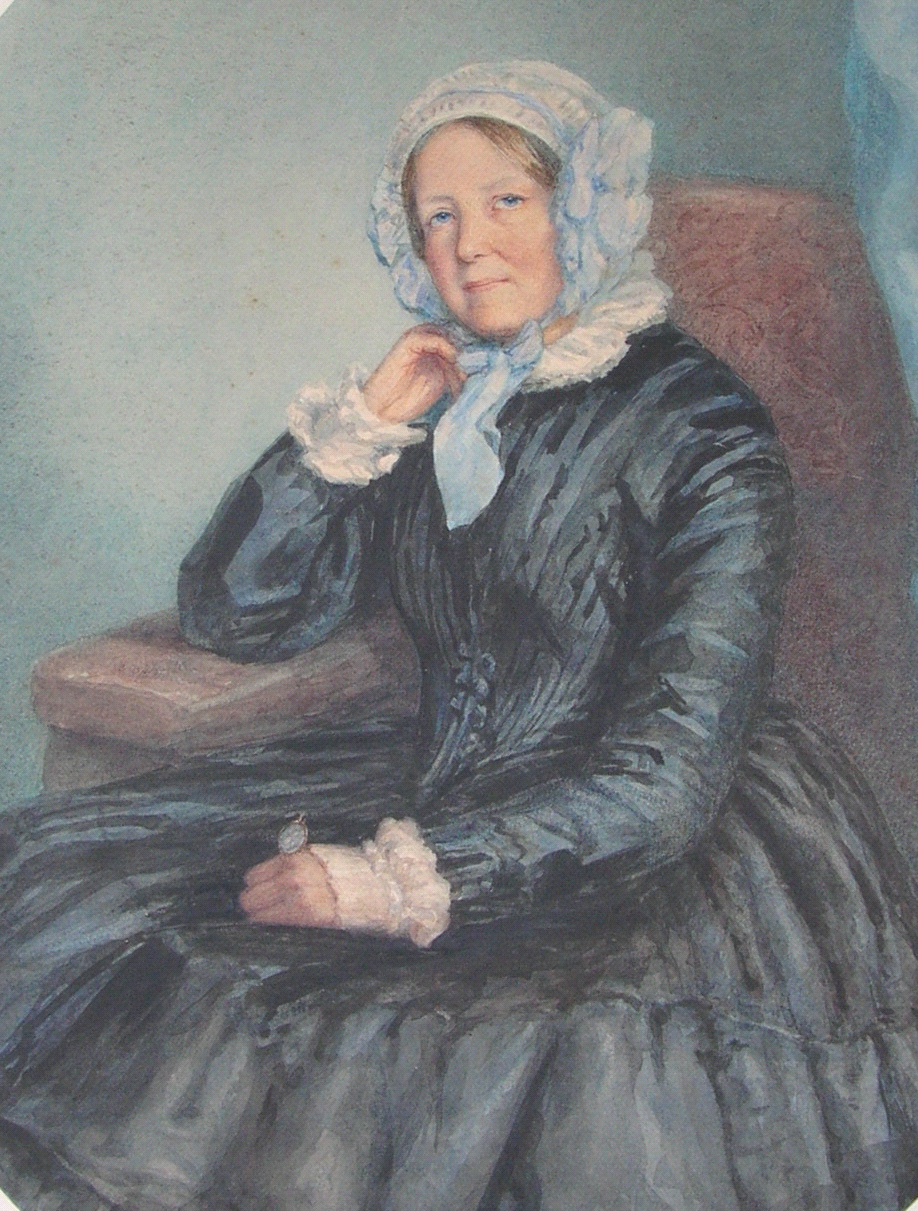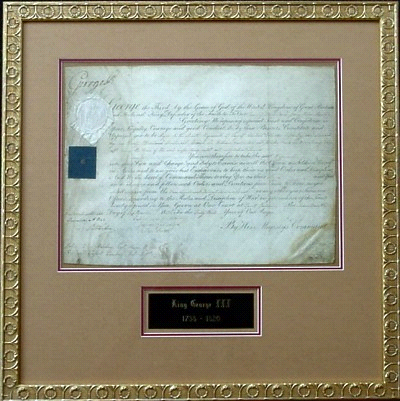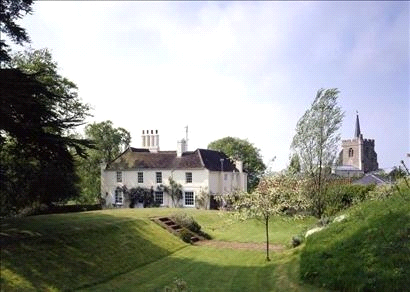Navigation: Hankeys of Churton > John Hankey > Robert Hankey > Robert Hanky > Thomas Hankey > Henry Hankey > Thomas Hankey > John Hankey >
John Peter Hankey (1770-1807)

Lt-Col John Peter Hankey, JP
Eldest son of John Hankey of Mincing Lane and Elizabeth nee Thomson; John Peter, known as Jack, was born on 4 Sep 1770, possibly at his father’s house at Roehampton, and was baptised on 30 Sep at Putney. He was educated at Charterhouse School Oct 1782-Dec 1786. His cousin Matilda wrote in 1839 that as a lad he was ‘of an irritable temper and very easily teazed’.
John Peter was a West India merchant, in his father’s firm Simond & Hankey of 7 Mincing Lane, and must have become senior partner at the early age of 22. As the business passed from father to son it continued to prosper, as can be seen from a description of the Island of Grenada published in December 1805, which lists thirteen estates totalling 5,667 acres owned by Simond & Hankey.

Mrs John Peter Hankey, nee Isabella Alexander
But in 1795, there had been a slave rebellion on Grenada, and the records of the firm’s Grand Bras estate show that ‘every building was destroyed and every negro fled.’ The same year, an essay was published ‘on the Malignant Pestilential Fever introduced into the West Indian Islands from Boullam on the coast of Guinea.’ It claimed that yellow fever which had struck the West Indies during the previous two years had arrived on a slave ship named the Hankey. It may possibly have been the arrival of this ship in London which caused the death of his uncle Thomas Hankey of Fetcham Park in 1793.
John Peter and his sons made various initiatives to improve the West Indian business. They bought engines from Boulton & Watt to do the milling on their estates in Jamaica and Grenada. They tried importing workers from Malta and Portugal to do the work previously done by their slaves, and they started growing nutmeg in an attempt to break the Indonesian spice monopoly. John Peter Hankey’s interest in Grand Bras Estates, Grenada was subsequently sold by his sons to their uncle Thomson Hankey.
On 24 Dec 1792, four months after his father’s death, John Peter was married at Walcot Church, Bath to Isabella Alexander (1769-1851), then of the Circus, Bath. Isabella was the fifth daughter of William Alexander of Blackhouse, Ayrshire and sister of Rt Hon Sir William Alexander of Airdrie, Lord Chief Baron of the Exchequer.
By her he had one daughter and three surviving sons, all baptised at St Dunstan in the East:
1798-1877 |
see below |
|
1804-1881 |
see below |
|
1805-1886 |
see below |
|
1807-1872 |
see below |
In 1793 John Peter sold his late father’s house at Streatham, and in 1794 purchased Grass Farm, Finchley. The largest medieval freehold estate [in Finchley] apart from the manors was Grotes or Grass Farm, between Church End and the Hendon boundary. In 1794 Frances M. Austen ... sold Grotes to John Peter Hankey, a banker whose widow Isabel purchased more land in 1819 and owned 118 acres in 1841. In 1856 Sir William Hankey [sic] sold it to John Harris Heal, grandson of the founder of the furniture firm.

John Peter Hankeys commission,
signed by King George III
On 17th September 1803, King George III signed his name in the upper left corner of a commission appointing John Peter Hankey a Major in Sir William Curtis’ 9th Regiment of the Loyal London Volunteer Infantry. Hankey was soon promoted to Lieutenant-Colonel and took over command, and it is in this capacity that he is depicted as a handsome officer in his portrait by Robertson. He raised the regiment in 1804 and it was disbanded in 1815 after Waterloo.
Sir Arthur Bryant describes preparations for war against Napoleon by volunteers like John Peter Hankey: ‘Young barristers and elderly merchants rose every morning at four to put in two or three hours before a bawling sergeant before going to their work and tramped back for another bout when their labours were done. The sound of drums and bugles rose above the din of the London traffic; and the evening stillness was broken by the pop, pop, pop of the musket and the crash of the volley.’ Lord Chatham, the Master-General of the Ordnance, was overcome by the demand for guns and ammunition and had to order more of the out of date Tower muskets rather than the new Baker rifle, but there were still not enough to go round, and some men had to make do with pikes instead. The Volunteers assembled at Greenwich on 18 May 1804 to be presented with their colours by the Lord Mayor of London.
On 15 Apr 1807 Jack Hankey was in the chair at the Anniversary meeting of the Royal Humane Society and displayed great address in the presentation of the Honorary Awards.

Anstey Manor
A Goldsmith and JP, he was elected Alderman of Candlewick Ward on 23 Jan 1806. In the general election for 1807, he was one of the candidates for election as MP for the City, but died on the first day of the poll on 6 May 1807, at his town house at 7 Mincing Lane.
‘The extreme fatigue which he had sustained during a canvass of 8 or 10 days for the City of London, produced a fever which terminated his life. The first symptoms of his complaint appeared about eight on the preceeding evening, when he complained of great fatigue and extreme thirst. He preferred wine and water to tea, which had been recommended to him ...’; the family legend is more fanciful, that he died from a chill caught at the hustings in spite of having put brandy in his boots.
Thus ended prematurely a career of enormous promise.
He was buried on 14 May in the family vault at Streatham, leaving an estate sworn under £60,000. His widow Isabella lived another 43 years, and died on 14 Jan 1851 at Balls Park, Hertfordshire; she was buried on 21 Jan at Streatham.
Anstey Manor, Hertfordshire was sold in 1818 to Rt Hon Sir William Alexander who died in 1842, having devised it to his sister Isabella Hankey for life, with remainder to her daughter Julia for life, and to Julia’s children in tail. The entail was barred in 1862 by Julia’s son Allen Alexander Bathurst. He and his mother sold the property in 1873. Isabella Hankey also owned the manor of Essendine, Rutland; two of her grandsons held the office of High Sheriff of Rutland, in 1889 and 1903.